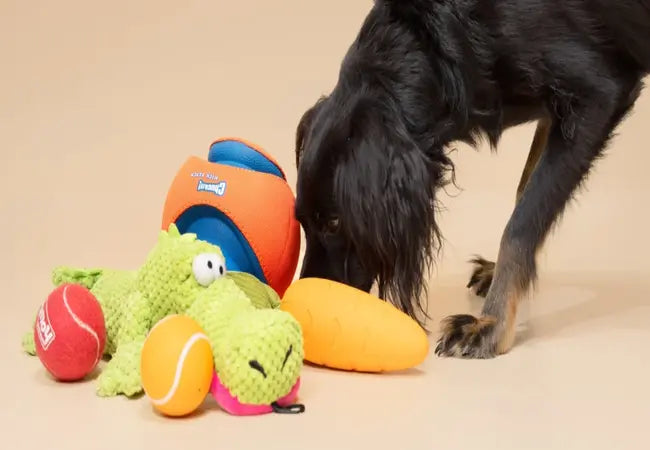Why Dogs Pee When Excited or Scared in 2025 – Vet‑Approved Insights into Submissive & Excitement Urination 🐶💧

In this article
Why Dogs Pee When Excited or Scared in 2025 – Vet‑Approved Insights into Submissive & Excitement Urination 🐶💧
By Dr. Duncan Houston BVSc
When your pup pees upon greeting or in frightening situations, it can feel embarrassing, confusing—and sometimes worrying. But for many dogs—especially puppies—it’s a natural response to emotion, not a deliberate behavior. In this vet‑approved 2025 guide, we'll explore the science of excitement and submissive urination, explain differences, identify when to worry, and share compassionate, effective strategies to support your dog as they grow confident and capable. 😊
1. 🧠 What Are Excitement and Submissive Urination?
Excitement urination occurs when puppies or excitable dogs lose bladder control due to overwhelming happiness or stimulation, typically harmless and often temporary.
Submissive urination is a fear-based response where dogs involuntarily urinate to show deference or reduce tension. You'll often see ear flattening, tail tucking, and a crouched posture.
2. 🚼 Who’s Most Affected?
- Puppies under 6–12 months often experience excitement peeing due to immature bladder control.
- Shy, anxious, or sheltered dogs may submissively urinate when approached or reprimanded.
- Adult dogs can experience it too, especially if they have anxiety, previous punishment, or cognitive decline.
3. 🔄 Why It Happens: Physical vs Emotional Causes
Excitement:
High emotion raises adrenaline and relaxes the bladder sphincter—urine leaks as the dog dances, wags, or welcomes you home.
Submissive:
Insecurity or fear triggers an appeasement reflex. Bladder muscles relax under stress, often accompanied by cowering, tail tucking, licking lips, or rolling over.
4. 🕵️♀️ Excited vs Submissive: Key Differences
| Behavior | Excitement Urination | Submissive Urination |
|---|---|---|
| Body posture | Happy bounce, wagging tail, upright ➡️ |
Crouched, tail tucked, ears back ➡️ |
| Typical age | Puppies/young dogs | All ages (anxious adults too) |
| Trigger | Joyful greeting or play | Approach, scolding, perceived threat |
| Bladder control | Still developing | Bladder fine; emotional signal |
5. ✅ When to Seek Veterinary Advice
- If peeing is frequent, uncontrolled, or painful—rule out infection, stones, cognitive issues.
- In seniors showing change—could signal incontinence, disease, or neurological decline.
- If accompanied by vomiting, weight loss, or lethargy—urgent vet exam is needed.
6. 🛠️ How to Manage and Reduce Accidents
A. Calm Greeting Routine
- Always ignore overly excited greetings—no fuss, no eye contact — until your dog is calm.
- Once calm, invite petting or praise in a low-key voice
- Ask visitors to follow the same calm routine
B. Build Confidence
- Teach simple commands like “sit” or “stay”—reward compliance to shift focus.
- Use crouched posture and slow gestures when greeting shy dogs to reduce perceived threat.
- Celebrate even slight calmness with treats or affection to reinforce positive emotional state.
C. Frequent Potty Breaks
- Before anticipated excitement—guests arriving, starting play, leaving—take your dog out to empty their bladder.
- Offer scheduled outdoor potty opportunities regularly.
D. Avoid Punishment
- Never scold or punish after accidents—it triggers more fear and submissive peeing.
- Use enzymatic cleaners to eliminate odor—don’t draw attention to the accident.
E. Progressive Desensitization
- Recreate low-level triggers—knocking, door sounds, greetings—without full excitement, then reward calmness.
- Gradually increase stimulus intensity while maintaining calm to help build control.
7. 🐕🦺 Training Exercises & Games
- “Sit and wait” greeting: Require sitting before saying hello, then reward calm compliance.
- Impulse-control games: Practice “leave it” or “wait” with joy-inducing toys or treats.
- Confidence-building activities: Scent trails, puzzle toys 🚶♂️ increasing independence and focus.
8. 📱 Ask A Vet App 2025 Support
Use the Ask A Vet app to:
- 📹 Upload videos of peeing behavior for expert analysis.
- 🧩 Receive customized greeting protocols and confidence-building plans.
- 💬 Consult live with vets/behaviorists—get guidance when your dog isn't improving.
Video feedback and expert advice ensure progress—even from your own home. 🐾📲
❤️ Final Thoughts
Excitement and submissive urination are largely emotional and physiological responses—not signs of “naughtiness.” With gentle management, routine, calm greetings, confidence training—and veterinary checks when needed—most dogs outgrow these behaviors by adolescence. In 2025, we embrace supportive, empathetic methods that strengthen your bond and your dog’s confidence. Every accomplishment—no matter how small—is a step toward a calmer, happier companion. 🐶💧
Need more support? Visit AskAVet.com or download the Ask A Vet app for personalized, vet-approved confidence-building plans.






